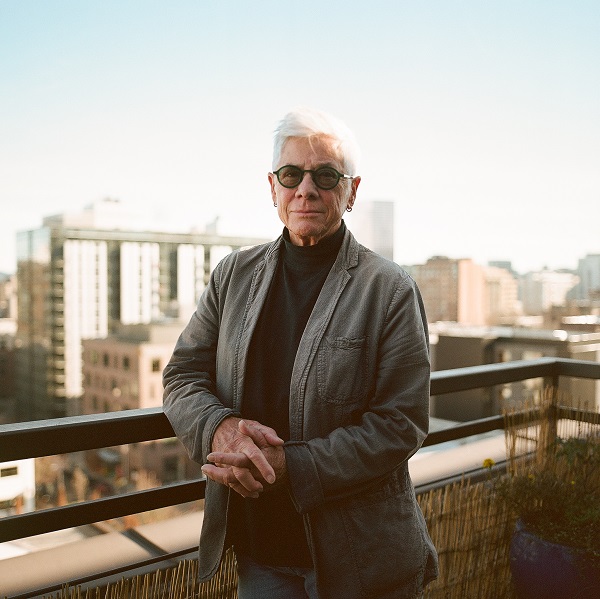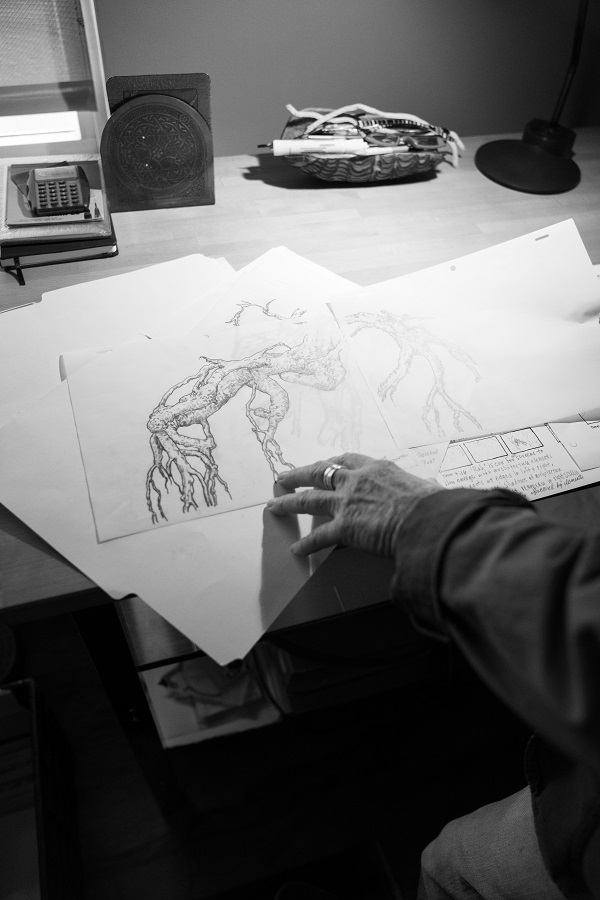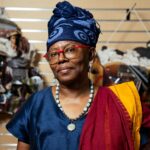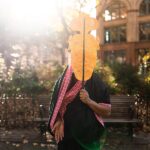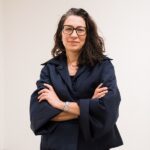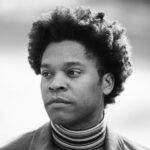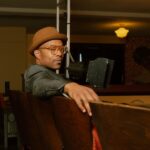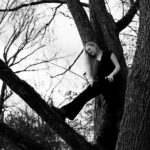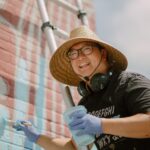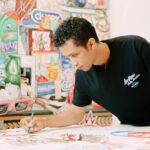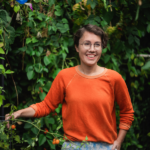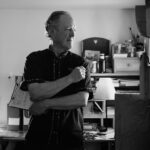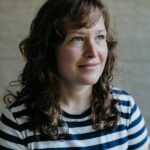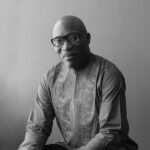Fragmentary Glimpses of Rose Bond
Written by Erica Berry; Photographed by Laura Dart
Decades before Rose Bond projected animated silhouettes from historic Portland—a smoking sailor, a Chinese man braiding his friend’s queue—onto the windows of a stately Old Town building, she stared at those windows from a city bus and wondered what was going on inside. Rose began riding this route as a fourth grader—down Williams or Mississippi, over the Steel Bridge, and then up Third Avenue—on her own, every Saturday, for art lessons with Sister Rosina. A few years earlier, her parents had immigrated from Canada to North Portland. A teacher at Rose’s new school had glimpsed her art talent and said to her parents, Don’t ignore this. They had nine children, but Rose was the oldest daughter. Her parents listened.
“You’d see something happen,” Rose recalls of that weekly route. “And then the bus would go off.” She calls these moments “fragmentary glimpses.” Today they are the building blocks of her work in nonlinear narratives, the shards of witness that catalyze the viewer’s imagination and render her films so lively.
In 2002, Rose projected Illumination #1 on the windows of the building her bus passed as a child. “[C]ar traffic stopped,” wrote The Oregonian, “crowds assembled in the middle of the street.” Looking up, a passerby would see—and hear—the felling of fir trees, the passing of ships, the clattering of plates in a cafe. Flickering through 120 years of onsite history in twelve minutes—each snapshot lasts thirty-to-sixty seconds—the piece eschews plot for a constellation of gestures. “You make up all this stuff about what you cannot see,” Rose told me. The viewer becomes that child on the bus, catching glimpses.
Animation is the art of combining still images to create the illusion of movement. When Rose began, she drew directly onto film strips. She works with digital tools now, but still relies on frame-by-frame drawings done by hand, as well as documentary images plucked from the archives. She is a researcher, a sifter of Google images, television, and newspapers. In “Gates of Light,” she projects a cinematic collage of local history onto the ornate windows of a 120-year-old New York City synagogue: a hand-drawn rainstorm above news headlines about a hurricane with “woeful wind,” from 1938; photographs of signs with Hebrew lettering, from 1945. Scored by Portland band 3 Leg Torso, the piece is a multisensory immersion replete with the flap of pigeon wings and congregational clapping.
Rose’s architectural projections are not ornamental; they do not fall into the category she calls “watch these colors obliterate the Cathedral.” Instead, her animations perform a sort of ventriloquism, awakening buildings as avatars of local history. It is impossible to witness Rose’s kaleidoscopic works and not consider urban space differently—to see buildings less as stage-sets than as storytellers.
I met Rose for around one-and-a-half hours. It was the week before the darkest day of the year, and we sat on stools in her lofted Northwest apartment, a diorama-like view of the city stretching beneath her wall of windows. I share this snapshot because I am trying to think like an animator. Someone who understands that the story is not just within the frame—her black turtleneck, a mug of tea, the silver sky—but often outside of its edges.
I think: What will Rose not tell me about herself? What will I not tell you? What if these unknowns are not a void, but an invitation?
Imagine trying to read in a coffee shop. On one side of you a couple chats about their child; on the other a woman recounts her night over the phone. No matter how enrapturing the book, your attention is likely to swerve between parties, eventually settling at the mouth of the cell phone. This is how our brains work: we cannot help but be transfixed by what we cannot grasp. We lean toward blank spaces. We try to fill them in.
Rose studied drawing and painting as an undergraduate, then spent her twenties performing that familiar choreography of the young artist, working what she calls “dead-end jobs,” painting houses, doing child care. Tasked with running a bead room at North Portland’s Vernon School, she decided to overhaul their art program instead. Venturing into the library, she discovered a series of experimental animated films by Caroline Leaf. Rose wasn’t a cartoon person, but these were something else: glass, sand, a light table. Rose, transfixed, enrolled in an evening animation class at the Northwest Film Center—and then another. Though she eventually received her MFA in Experimental Filmmaking at the Art Institute of Chicago, and now chairs the Animated Arts program at Willamette University, those two night classes still comprise Rose’s only formal training in animation. She learned Photoshop in a course she paid for with school district training money. Sitting in a computer lab with people learning to brush a bruise off an apple, she thought, I’m the only one here who is going to use this for something really weird.

